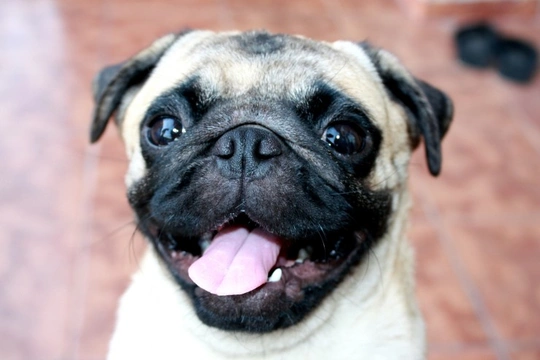
How often should you give your pug treats?
The pug is the UK’s third most popular dog breed, and one that has an enduring appeal among dog owners of all different types. This small, comical and fun-loving dog from the toy dog group makes for a very loving companion that is usually a pleasure to live with, and that can be really rewarding to own.
However, it is important that all toy dogs are still appropriately trained, managed and provided with boundaries, to help them to feel secure and to keep their behaviour appropriate. This means that feeding them too many treats – a common problem with many toy dog owners – can cause problems of its own.
Additionally, pugs tend to be fairly rounded and well-padded dogs, and a large proportion of dogs of the breed are overweight, sometimes considerably so. This can cause a huge range of problems for the dogs themselves, and have a direct and negative impact on their quality of life and lifespan.
Like all small dog breeds, there’s a fine line for pugs between a healthy weight and overweight, and just a few too many treats each day can soon tip the balance.
Giving dogs treats on a daily basis is fine – for pugs and all other breeds – but knowing how often is appropriate to give treats and what type of treats to give is important. If you want to keep your dog at a healthy weight and prevent problems whilst still giving them the treats and rewards that they enjoy, this article will break down the question of “how often you should give your pug treats” and explain how to work out the right amount of treats to give each day. Read on to learn more.
How many treats is it ok to give to your pug?
There are several different elements to determining how many treats is sufficient for the day, and we’ll look at each of these elements in turn later on. However, one thing that is the same for all pugs is that you should not just free-feed treats, giving them continually throughout the day without monitoring or planning how many treats your dog gets.
You should factor treats into your dog’s balanced diet, and not see them as something given on top of this.
This means that each day, you should allocate a portion of treats for you dog to have throughout the day, and not go over this amount. The bulk of your dog’s diet and nutrition should come from their planned meals – and treats should add up to no more than 10% of their total food intake per day.
You also need to reduce the amount of food you provide for their main meals by this same percentage to allow for the calories in the treats.
How often can I give my pug treats?
When you have allocated a daily portion of treats for your pug, you will have to spread them out to last the day. Think about why you are giving your dog treats too – such as if you will need to allocate a significant amount of them for training.
How often you can give your pug treats will depend in part on how many treats make up their daily portion, and how you spread them out throughout the day.
When and why you should give your pug treats
Just feeding your pug a stream of treats throughout the day won’t provide any value for the dog – and will mean that they don’t place such a high value on their treats. A treat should be just that – a treat – something special and additional, and not something that your dog expects to be given all the time.
Assigning value to treats in your dog’s mind means that treats will get their attention and prompt them to follow a command or otherwise work to earn the treat.
Giving your pug the odd treat just because they look cute or because you want to raise a wag is totally fine, but make sure that this forms just a small part of your wider care and management regime and that treats are also used to get your dog’s attention, motivate them, and reward them for following commands.
If your dog never has to work for a treat, or sees them as something that they are owed, they may become demanding and pushy or prone to begging, none of which are desirable traits in any dog.
It is a good idea to dedicate at least 50% of your pug’s treats as action-based rewards, which your dog has to do something to achieve. Whether this be coming back when called in the dog park, learning or following a command or simply to get them to look to you for direction when you call your dog, treats make valuable rewards for compliance.
You should also keep a few treats each day in reserve just in case you need them in a specific situation – such as to get your dog to come to you if they’re paying attention to something else, doing something undesirable, or if you need your dog to keep still to be brushed or groomed.
Additionally, make sure that your pug shows good manners before they are given a treat – ask them to sit (if you aren’t already using the treat to incentivise a command) and ensure that they take their treats gently and don’t snap at them.



